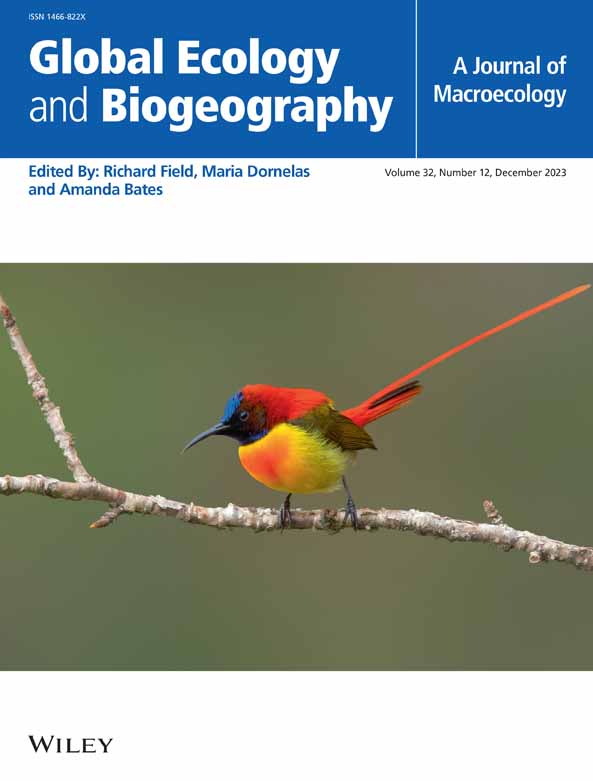Evolutionarily Distinct Species and Their Partners Have Fewer Links in Ecological Networks
Abstract
Aim
Ecological networks describe the complex set of interconnections among species and their environment, and network structure can inform the stability, resilience, and functioning of ecosystems. Increasing attention is being paid to the mechanisms that determine species interactions. Phylogeny has informed our understanding of connections within networks, mostly by describing the strength of phylogenetic conservation of interactions. Here, we examine how the phylogenetic position of a species relates to its functional position within a network, testing the relationship between phylogenetic and network topologies.
Location
Global.
Time Period
Early 20th century to present.
Major Taxa Studied
Birds and plants.
Methods
We used a large dataset of frugivore interactions to calculate the network degree of focal species (degree) and the partners they interact with (partner degree) and bird and plant phylogenies to calculate local evolutionary distinctiveness (ED), a measure of evolutionary distinctiveness calculated on a community-level phylogeny. We then fit binomial Bayesian models to estimate the effect of species' local ED on their degree and that of their partners. In avian networks, we incorporated bird traits from AVONET in models to determine their contributions to degree and partner degree relative to those of local ED.
Results
The partners of both high local ED birds and plants tend to have fewer interactions in a network than do partners of low local ED species, and birds with high local ED tend to interact with fewer plant species. In birds, the statistical effect sizes of local ED on degree and partner degree are comparable to or larger than those of measured traits.
Main Conclusions
Our analysis illustrates how phylogenetic relationships affect present-day ecologies and underscores the unique ecological contribution of evolutionary outliers.


 求助内容:
求助内容: 应助结果提醒方式:
应助结果提醒方式:


